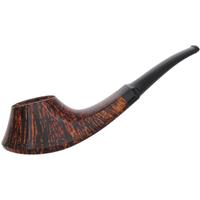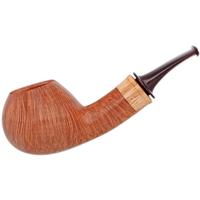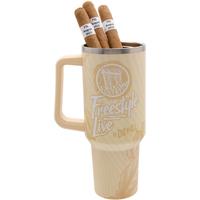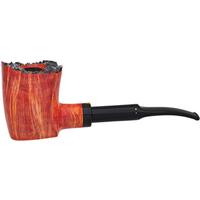Maybe QC doesn't check every pipe. It's got an MPB stamp on the bottom. I forget why the MPBs are supposed to be a little better than some of their other Brebbia pipes. Obviously, this piece has at least an issue, and maybe even some problems. The pipe is really light, which I usually think is a good thing, but makes me think that maybe this one is not dense enough.
I'm actually going to try and address the two big voids myself, having received reassurance from the distributor that I can still attempt to get a replacement under warranty, working through them, if the pipe still fails. At that point I'm thinking that they would be going the extra mile for me, since technically they would want me to send it back to where I bought it from, in order to get any warranty issues resolved.
Thanks, ophiuchus, I really like the shape and everything about it. The draw seems nice too, I just have not smoked it yet.
Plan is to carefully sand down the sharp edges of the two voids a little, clean, dampen, completely fill with pipe cement that I will make from red oak ash from my woodstove, allow to cure, and then sand flush. There's one other very minor void that I will also address in the same way. I'm wondering if the "honey-coated bowl" might be good for the first smoke to help build some cake and maybe prevent any soft briar from igniting. I've never done it before, and need to read more about it. Also I'll probably smoke very slowly and alternate between full and half-packed bowls to help build some cake, as I have had good results with that in the past. I'll probably also cover the top and shake the grey pipe tobacco ash around in the bowl after a smoke, as that helps to build a little soft cake quickly. If it all works out, I'll ream the cake back with my reamer if it gets too thick. If anyone has any tips or suggestions concerning my plan, feel free to chime in. : :
:
I'm actually going to try and address the two big voids myself, having received reassurance from the distributor that I can still attempt to get a replacement under warranty, working through them, if the pipe still fails. At that point I'm thinking that they would be going the extra mile for me, since technically they would want me to send it back to where I bought it from, in order to get any warranty issues resolved.
Thanks, ophiuchus, I really like the shape and everything about it. The draw seems nice too, I just have not smoked it yet.
Plan is to carefully sand down the sharp edges of the two voids a little, clean, dampen, completely fill with pipe cement that I will make from red oak ash from my woodstove, allow to cure, and then sand flush. There's one other very minor void that I will also address in the same way. I'm wondering if the "honey-coated bowl" might be good for the first smoke to help build some cake and maybe prevent any soft briar from igniting. I've never done it before, and need to read more about it. Also I'll probably smoke very slowly and alternate between full and half-packed bowls to help build some cake, as I have had good results with that in the past. I'll probably also cover the top and shake the grey pipe tobacco ash around in the bowl after a smoke, as that helps to build a little soft cake quickly. If it all works out, I'll ream the cake back with my reamer if it gets too thick. If anyone has any tips or suggestions concerning my plan, feel free to chime in. :
 :
:

































